Welcome to Shizuoka, home to a rich variety of birds! From the majestic Japanese Cormorant to the ubiquitous Black-headed Gull, Shizuoka offers plenty of opportunities to spot a variety of feathered friends.
The area is home to various species, giving bird watchers plenty of chances to observe them in their natural habitat. Whether a beginner or an experienced birder, you will find something to enjoy in Shizuoka.
So explore the wonders of the avian world in this beautiful part of Japan!
24 Birds to Watch in Shizuoka
Shizuoka is a prefecture in Japan famous for its natural beauty, cultural heritage, and delicious cuisine. But did you know that it is also a paradise for bird lovers? Shizuoka has diverse habitats, from the coast to the mountains, that support various bird species.
Whether a beginner or an expert, you will find something to enjoy in Shizuoka’s avian world. Here are 24 birds that you should watch out for when you visit Shizuoka.
1. Oriental Turtle Dove
The Oriental turtle dove, or rufous turtle dove, is a bird species from the Columbidae family. This species is found in various habitats, from Central Asia to Japan. It is characterized by its colorful plumage, which can vary in patterning depending on the region.
For example, at least six distinct subspecies have been identified, each with their unique plumage.
The Oriental turtle dove is an important species in the ecosystem, as it helps to disperse seeds and pollinate plants and is an important food source for many predators. Additionally, this species is a popular game bird in some areas and is often hunted for sport.
| Kingdom | Animalia |
| Phylum | Chordata |
| Class | Aves |
| Order | Columbiformes |
| Family | Columbidae |
| Genus | Streptopelia |
| Species | S. orientalis |
2. Little Grebe
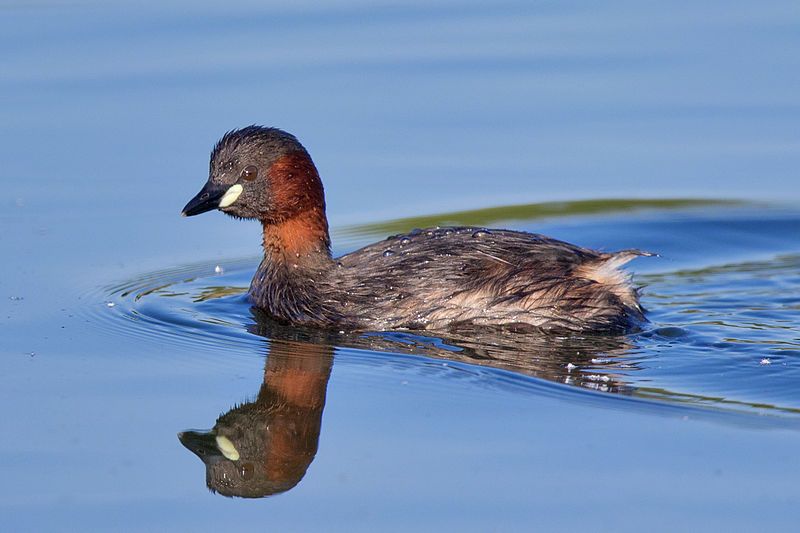
The little grebe, also known as the dabchick, is a small water bird belonging to the Grebe family. Its genus name, thus, originates from Ancient Greek and translates to “fast.” The second part of its name, bapto, is also derived from Greek and means “to sink under.”
The species n.”e, ruficollis, is a combination of two Latin words, Rufus meaning “red” and collis meaning “necked,” which is itself derived from the Latin word for neck, collum.
Therefore, the little grebe’s scientific name refers to its fast swimming capabilities and red-necked appearance.
| Kingdom | Animalia |
| Phylum | Chordata |
| Class | Aves |
| Order | Podicipediformes |
| Family | Podicipedidae |
| Genus | Tachybaptus |
| Species | T. ruficollis |
3. Falcated Duck
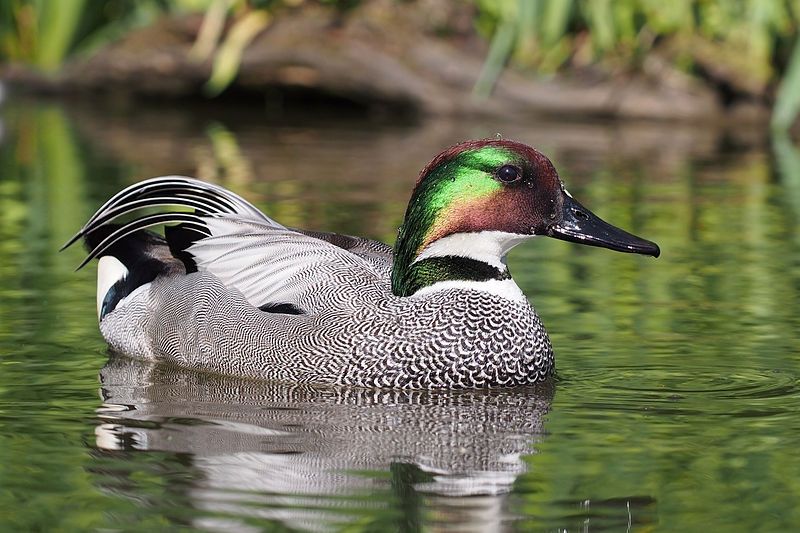
The falcated duck is a species found in the eastern Palearctic region. It is a medium-sized bird and is closely related to the gadwall duck. Its body is mostly dark brown, while its back is lighter brown.
It has a distinctive curved or ‘falcated’ tail which is dark brown on top and white underneath. Its head is also brown, with a white patch on the cheeks. Its bill is a dark grayish-black. The falcated duck is mostly found in wetlands, such as lake shores and marshes.
It feeds on a variety of aquatic plants, seeds, insects, larvae, and mollusks. It breeds in the spring months and usually lays a clutch of nine to ten eggs. The falcated duck is an important species in the east Palearctic and is classified as ‘Least Concern’ by the IUCN.
| Kingdom | Animalia |
| Phylum | Chordata |
| Class | Aves |
| Order | Anseriformes |
| Family | Anatidae |
| Genus | Mareca |
| Species | M. falcata |
4. Whooper Swan
The Whooper Swan is a large bird native to the northern hemisphere. It is closely related to the North American Trumpeter Swan and is the species that gives its genus, Cygnus, its name.
The Whooper Swan is also sometimes known as the Common Swan, owing to its widespread distribution throughout Eurasia. It is a migratory species, traveling south during the mod of returning north in the morning.
The Whooper Swan is a large, white bird with an orange beak and a black facial patch. Its wingspan can reach up to two meters, making it one of the largest flying birds in the world.
The Whooper Swan is a popular bird for birdwatchers, with its distinctive call and majestic flying ability making it a beautiful sight to behold.
The bird is also important to some cultures, with its feathers used to decorate traditional clothing and its voice used to create certain musical instruments. Overall, the Whooper Swan is an important species that should be appreciated and respected.
| Kingdom | Animalia |
| Phylum | Chordata |
| Class | Aves |
| Order | Anseriformes |
| Family | Anatidae |
| Genus | Cygnus |
| Species | C. cygnus |
5. Eurasian Wigeon
The Eurasian wigeon, also known as the European wigeon, widgeon, or simply the wigeon, is a species of dabbling duck in the genus Mareca. It is a widespread species throughout its Palearctic range, which includes most of Europe, Asia, and northern Africa.
The Eurasian wigeon is typically found in wetlands, such as marshes, lakes, and ponds, where it feeds on aquatic plants and small aquatic invertebrates.
This species is easily identified by its distinctive white patch on its head and bright chestnut-colored breast. The Eurasian wigeon is a migratory species, with northern populations migrating south for the winter months.
During the breeding season, male Eurasian wigeons can be quite vocal and perform various courtship displays, including posturing and head-bobbing.
The Eurasian wigeon is an important species for hunters, as it is one of the most prevalent game hunters throughout its range.
| Kingdom | Animalia |
| Phylum | Chordata |
| Class | Aves |
| Order | Anseriformes |
| Family | Anatidae |
| Genus | Mareca |
| Species | M. penelope |
6. Tufted Duck
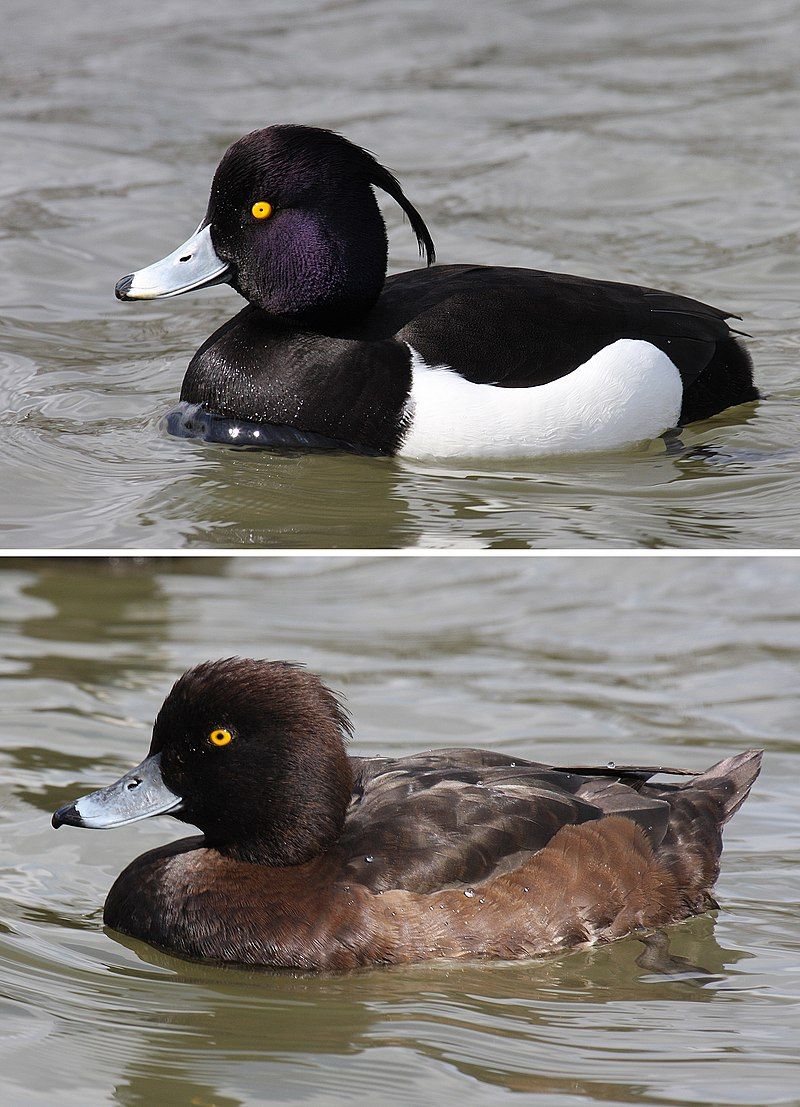
The tufted duck, also known as the tufted pochard, is a small diving duck native to northern Eurasia. Its population is estimated to hover around one million birds.
The scientific name of this species, Aythya fuligula, is derived from two Ancient Greek words: aiLithuaniawhich was an unidentified seabird mentioned by writers such as Hesychius and Aristotle, and the Latin words fulogosoot) and gula (throat).
This name is likely related to the duck’s black-and-white plumage and petite throat. The tufted duck is a medium-sized waterfowl measuring about 39 cm long and weighing about 550-750 g. It has a black upper body with a white belly and a road.
Its most distinctive feature is the crest of black feathers on its head, which gives it its name. The bill of the tufted duck is black and has a yellow spot on the middle of the upper mandible. It also has a yellow eye ring and a black-to-yellowish-brown eye.
The wings are black and white, with white primary feathers and black secondaries. The legs and feet are grey. The tufted duck is an omnivore feeding on both plant and animal matter. Its diet consists mainly of aquatic plants, mollusks, crustaceans, and small fish.
It also feeds on insects, larvae, and some grains. The tufted duck nests near water, usually in dense vegetation, laying pale greenish-blue eggs. The ducks typically form monogamous pairs for several consecutive breeding seasons.
The tufted duck is a widespread species with a large global population. It is considered the least concerning on the IUCN Red List, although its numbers have declined due to habitat loss and degradation.
Nonetheless, its wide range and large population allowed the species to remain relatively stable.
| Kingdom | Animalia |
| Phylum | Chordata |
| Class | Aves |
| Order | Anseriformes |
| Family | Anatidae |
| Genus | Aythya |
| Species | A. fuligula |
7. Baikal Teal
The Baikal teal is a species of dabbling duck, which is a type of duck that feeds in shallow water, tipping its head under the surface to search for food. This duck has two distinctive names: the bimaculate duck and the squawk duck.
It is native to eastern Russia, weeds in the summertime, and then migrates to East Asia for winter. The Baikal teal is a small duck, only growing to a length of about 14 inches.
It has a dark brown body with white spots on its wings, giving it its other name, the bimaculate duck. The Baikal teal also has a loud call, which is why it is also known as the squawk duck.
This duck is an important part of the ecosystem of eastern Russia and East Asia and is a popular birdwatcher species.
| Kingdom | Animalia |
| Phylum | Chordata |
| Class | Aves |
| Order | Anseriformes |
| Family | Anatidae |
| Genus | Sibirionetta |
| Species | S. formosa |
8. Black Scoter
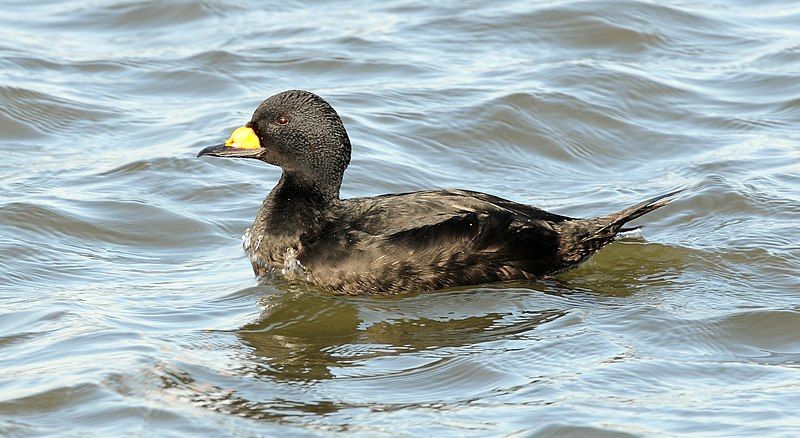
The black scoter, or American scoter, is a large sea duck that can grow up to 43-49 cm in length. The scientific name of this species is derived from Ancient Greek, with “melas” meaning “black” and “netta” meaning “duck”.
The species name is derived from the Latin word for “American”.This sea duck species is typically black, with a white patch on its forehead and a white line along its face. Its bill is yellow, and its legs and feet are orange-red.
It has a black head and neck and a white belly. The black scoter is a fairly common sight in the coastal regions of North America, as it migrates to and from its breeding grounds in the Arctic. The black scoter feeds on mollusks, crustaceans, and aquatic insects.
It dives underwater to search for food and stays submerged for up to 45 seconds. During the breeding season, the black scoter can be seen in large flocks, often numbering in the thousands.
It nests on the ground near water, and its eggs are incubated for around a month. Due to hunting and habitat loss, the lack of scoter is a species of conservation concern in some areas.
ItThenternational Union for Conservation of Nature (IUCN). It lists it as a species of most minor concern; its population is still declining, and it is important to protect its habitat to ensure survival.
| Kingdom | Animalia |
| Phylum | Chordata |
| Class | Aves |
| Order | Anseriformes |
| Family | Anatidae |
| Genus | Melanitta |
| Species | M. americana |
9. Common Pochard
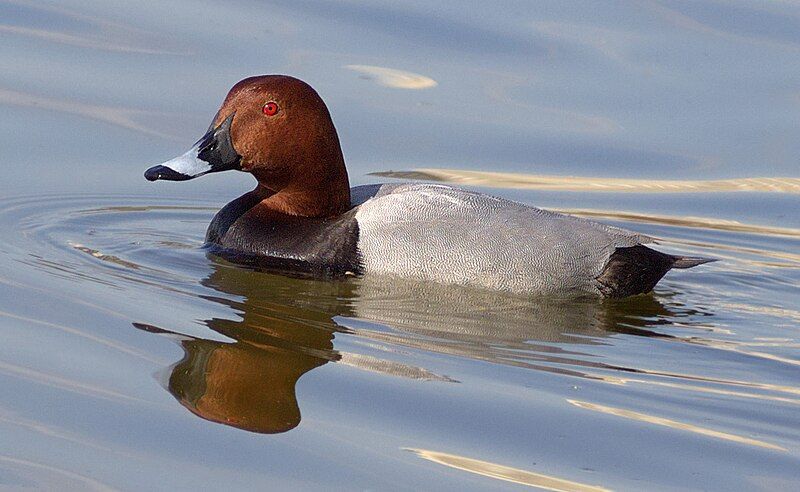
The Common Pochard is a species of diving duck found throughout the world. It has a scientific name derived from the Ancient Greek words Lithuania and farina.
Aithuia is an unidentified seabird mentioned by several authors, such as Hesychius and Aristotle. Erina is Latin for “wild game” or “wild,” derived from the Latin word fetus.
This scientific name indicates Common Pochard’s wild nature, as it is a game bird that lives in the wild. The Common Pochard is a medium-sized diving duck that lives in ponds, rivers, lakes, and other bodies of water.
It is a strong swimmer, capable of diving deep underwater to feed on its prey. It is also an adept flyer, able to take off and land easily. It typically feeds on small fish, crustaceans, and aquatic insects.
The Common Pochard is typically found in large flocks and is, therefore, an important part of the ecosystem, providing food for both predators and other waterfowl.
| Kingdom | Animalia |
| Phylum | Chordata |
| Class | Aves |
| Order | Anseriformes |
| Family | Anatidae |
| Genus | Aythya |
| Species | A. ferina |
10. Mandarin Duck
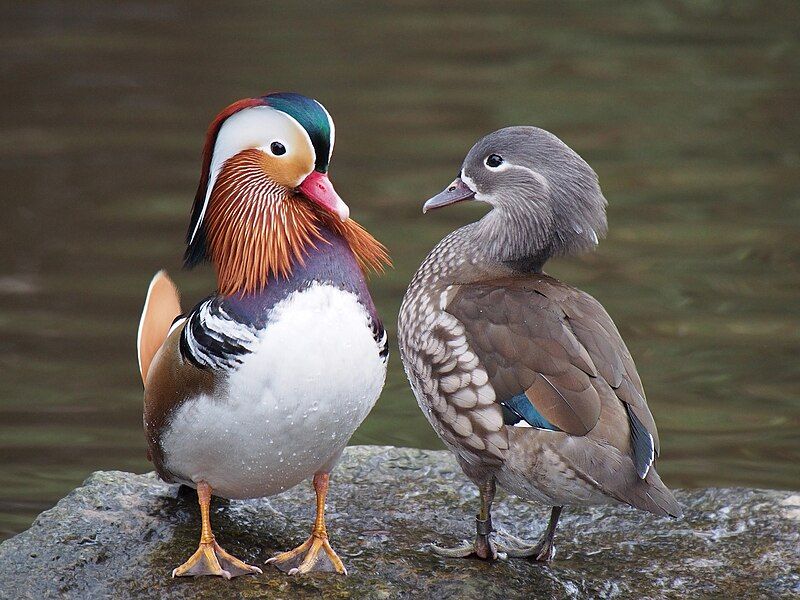
The mandarin duck is a beautiful and unique species of duck that is native to the East Palearctic. It is known for its striking appearance, as males and females look remarkably different.
Male mandarin ducks have colorful plumage featuring a combination of red, orange, yellow, and blue feathers, while females are brown and white. The body of the mandarin duck is medium-sized, measuring between 41 and 49 cm in length, with a wingspan of 65 to 75 cm.
It is closely related to the wood duck, the only other duck species belonging to the genus Aix.
The mandarin duck is an elegant species that is highly sought-after by birdwatchers and photographers, and its unique coloring and graceful behavior make it a true joy to observe.
| Kingdom | Animalia |
| Phylum | Chordata |
| Class | Aves |
| Order | Anseriformes |
| Family | Anatidae |
| Genus | Aix |
| Species | A. galericulata |
11. Smew
The Smew is a species of duck that is part of the genus Mergellus. This genus is the only one still in existence, and its name is a diminutive of Mergus. The word ‘albellus’ originates from the Latin word ‘albus’, which translates to ‘white’.
Mergellus is closely related to the genus and is sometimes grouped with Mergus, though it is likely to be closely associated with the Goldeneyes.
This is an interesting species due to its unique combination of characteristics and its close relationship to the two other genera.
| Kingdom | Animalia |
| Phylum | Chordata |
| Class | Aves |
| Order | Anseriformes |
| Family | Anatidae |
| Genus | Mergellus |
| Species | M. albellus |
12. Mute Swan
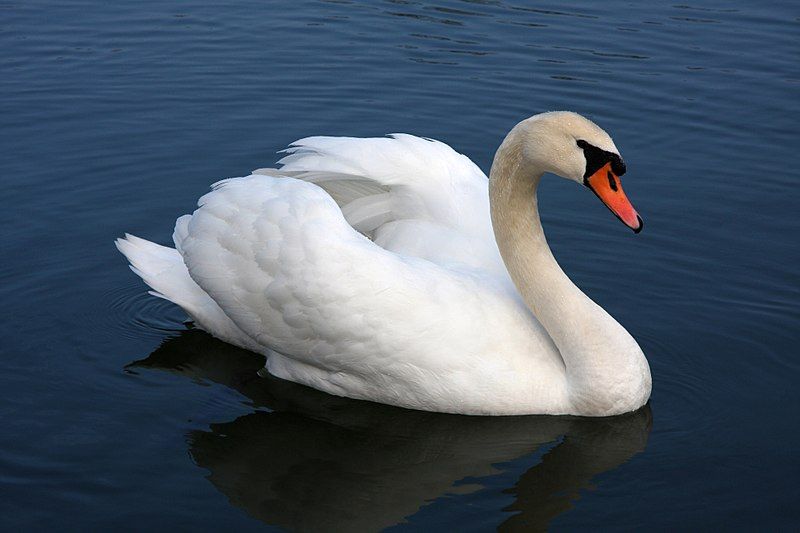
The mute swan is a species belonging to the waterfowl family Anatidae. It is native to many regions, including much of Eurosiberia and the northernmost parts of Africa.
The mute swan is considered the most recognizable species in the world, with its iconic white plumage and long, curved neck. Mute swans are known for having a range of unique behaviors and characteristics.
They have a distinct call, which is a soft, low-frequency honk. This call is used to communicate between birds and to warn of potential danger. Mute swans are also quite large, can grow to 6 feet long, and weigh up to 30 pounds.
They feed primarily on aquatic plants, which they submerge themselves to reach. In addition to their physical characteristics, the mute swan is also known for its social behaviors. They are highly social animals and can be seen congregating in large groups.
They have a strong bond with their mate and can recognize them even after long periods of separation. Mute swans are also aggressive and can become territorial when defending their young.
The mute swan is an iconic species with many exciting behaviors and characteristics. Its majestic white plumage and long curved neck make it one of the world’s most recognizable species of waterfowl.
Its social behavior and strong bond with its mate are also remarkable traits that make the mute swan a special species.
| Kingdom | Animalia |
| Phylum | Chordata |
| Class | Aves |
| Order | Anseriformes |
| Family | Anatidae |
| Genus | Cygnus |
| Species | C. olor |
13. Tundra Swan
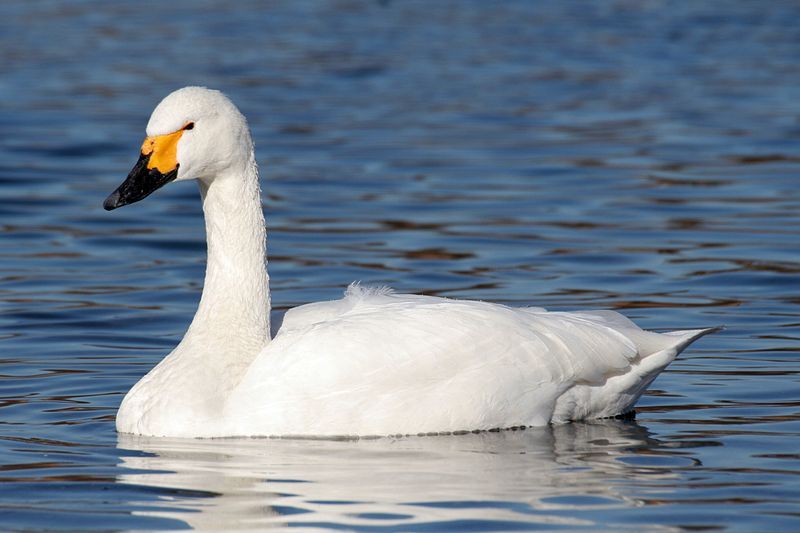
The tundra swan is a species of swan thunder in the Holarctic region, which covers most of the Northern Hemisphere. It is a small species, typically divided into two distinct taxa – Bewick’s swan and the whistling swan.
Bewick’s swan is found in the Palaearctic region, which covers areas in Europe, Asia, and Africa, while the whistling swan is found in the Nearctic region, which covers North America.
In most cases, these two taxa are considered conspecific, meaning they are considered the same species. However, some experts believe they should be split into two species.
| Kingdom | Animalia |
| Phylum | Chordata |
| Class | Aves |
| Order | Anseriformes |
| Family | Anatidae |
| Genus | Cygnus |
| Species | C. columbianus |
14. Eastern Spot-Billed Duck
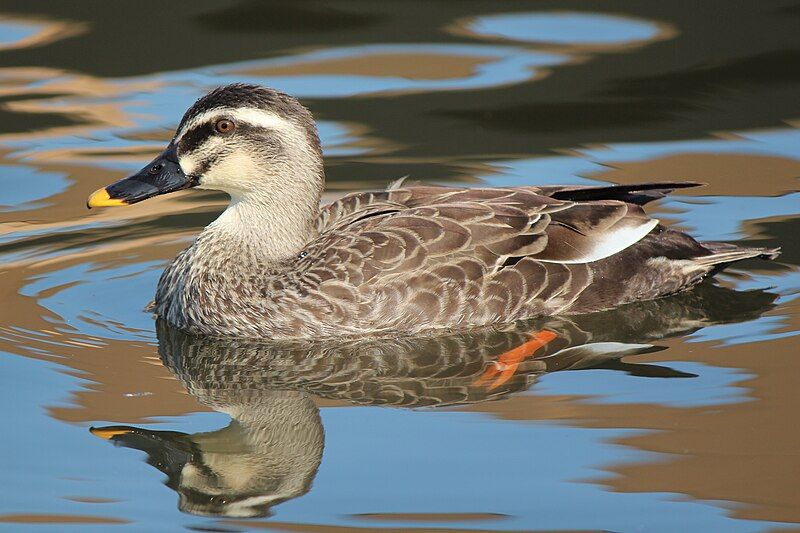
The eastern spot-billed duck, also known as the Chinese spot-billed duck, is a dabbling duck found throughout East and Southeast Asia.
This species was once considered a subspecies of the Indian spot-billed duck, and both were referred to as the spot-billed duck—the name of this particular duck species derived from the yellow spot thud on the bill.
This spot is usually more distinct on the eastern spot-billed duck than one Indian spot-billed duck, thus making it easier to identify. The eastern spot-billed duck is a medium-sized duck distinguished by its brown plumage and yellow bill.
The male eastern spot-billed duck has a black head and neck, while the female has a grey-brown head and neck. The eastern spot-billed duck is a relatively common bird species in various habitats, such as wetlands, marshes, and lakes.
They feed mainly on insects, mollusks, and vegetation, while they are also known to eat small fish and crustaceans. The eastern spot-billed duck is a social species annually found in large flocks.
During the breeding season, they form monogamous pairs and breed in shallow wetlands, where the female lays and incubates the eggs.
The eastern spot-billed duck is an essential bird species. It is an important food source for many animals and sport hunting.
| Kingdom | Animalia |
| Phylum | Chordata |
| Class | Aves |
| Order | Anseriformes |
| Family | Anatidae |
| Genus | Anas |
| Species | A. zonorhyncha |
15. Baer’s Pochard
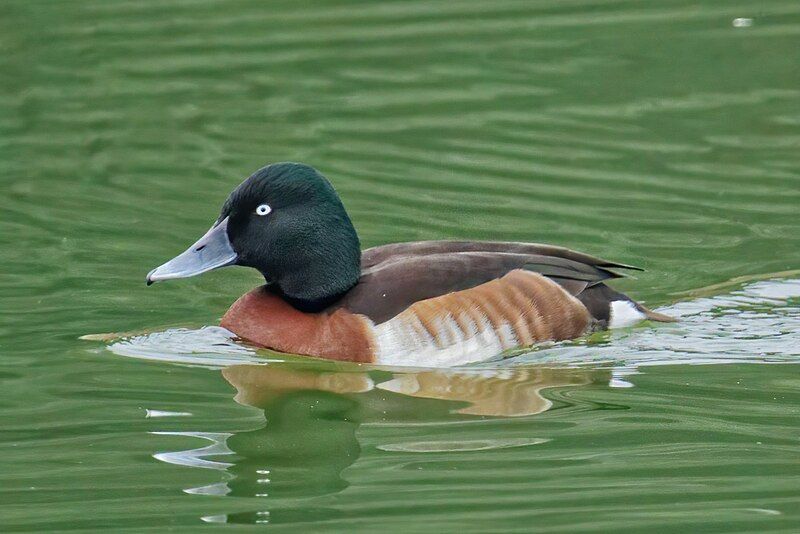
Baer’s pochard is a species of diving duck found in eastern Asia. It is a resident bird in North and Central China and used to breed in southeast Russia and Northeast China before migrating to southern China, Vietnam, Japan, and India.
In winter. This duck species is monotypic, meaning it is the only species. The holotype for Baer’s pochard was collected in middle Amur, when in Russia.
This duck species is vital to its local ecosystems, as it plays a role in the waterfowl food chain. It feeds on aquatic plants, mollusks, and insects and is an essential source of sustenance for other animals in the area.
It is also a popular game bird, unted for its meat. Unfortunately, the Baer’s pochard is currently classified as endangered due to various threats facing the species. These threats include habitat loss, hunting, and competition with other species for food.
Conservation efforts are ongoing to ensure the species does not become extinct, and more research is needed to understand the ecology of this species better.
| Kingdom | Animalia |
| Phylum | Chordata |
| Class | Aves |
| Order | Anseriformes |
| Family | Anatidae |
| Genus | Aythya |
| Species | A. baeri |
16. Common Shelduck
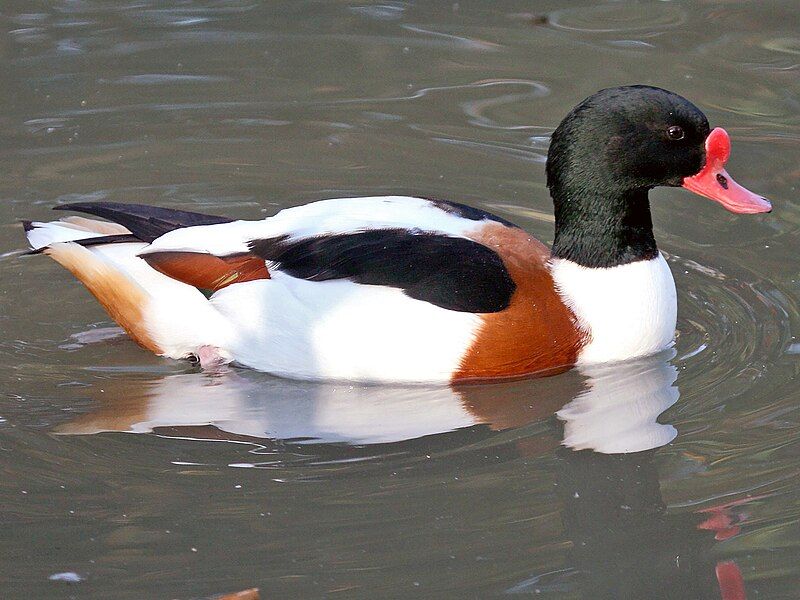
The common shelduck is a waterfowl species belonging to the genus Tadorna. This species is widely distributed across the Palearctic region, encompassing Europe and Siberia.
During the breeding season, the common shelduck prefers temperate climates. In contrast, during the winter months, it can be found in subtropical regions and the Maghreb, a region in North Africa.
This species is considered fairly common in the Euro-Siberian region, making it a well-observed waterfowl species.
| Kingdom | Animalia |
| Phylum | Chordata |
| Class | Aves |
| Order | Anseriformes |
| Family | Anatidae |
| Genus | Tadorna |
| Species | T. tadorna |
17. Garganey
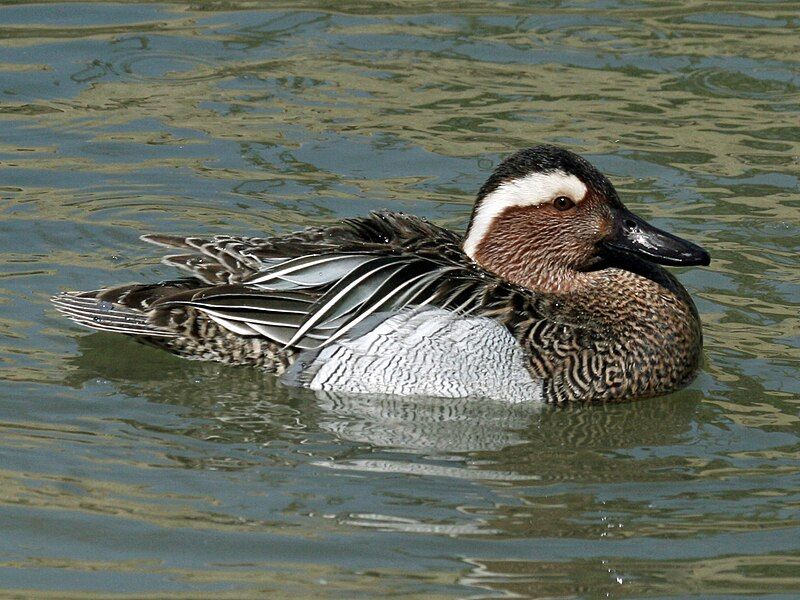
The garganey is a small species of dabbling duck, meaning that it feeds by tipping forward and scooping food off the water’s surface. It is native to much of Europe and the Palearctic, a geographical area covering much of the northern parts of the Old World.
The garganey is strictly migratory, meaning that the entire population moves south during the winter of the Northern Hemisphere.
This migratory behavior sees the garganey traveling to southern Africa, India, Bangladesh, and Australasia, where large species flocks form.
This behavior is essential to the species’ survival, as the warmer climates of the south provide it with the food and suitable habitats that it needs to continue its life cycle.
| Kingdom | Animalia |
| Phylum | Chordata |
| Class | Aves |
| Order | Anseriformes |
| Family | Anatidae |
| Genus | Spatula |
| Species | S. querquedula |
18. White-Throated Needletail
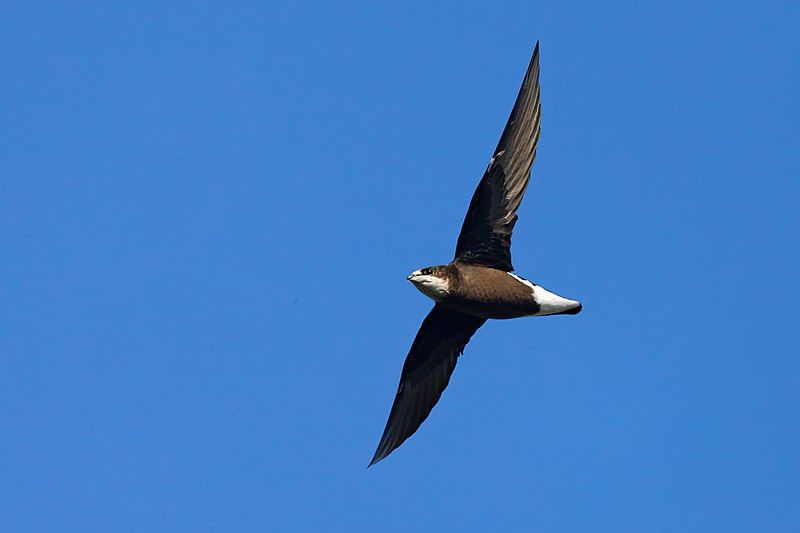
The white-throated needletail is a large swift belonging to the genus Hirundapus. It is renowned for its incredible speed in horizontal flight, with reports claiming that it can reach up to 170 km/h.
However, these claims remain unverified due to the lack of published studies that have used accurate methods to measure its speed. It is also commonly referred to as the needle-tailed swift or spine-tailed swift.
The white-throated needletail is a migratory bird in parts of South Asia, Australia, and New Zealand. They migrate in large flocks, often in the thousands, and their flight pattern is characterized by powerful and direct flight with no gliding.
This makes it difficult to accurately measure the speed of the needletail, as traditional methods used to measure the speed of birds, such as clocking the time it takes them to cover a certain distance, are unsuitable.
The needletail is unique among swifts in its ability to reach such high speeds. Other swifts, such as the common swift, typically reach a maximum get of around 50 km/h, with their average speed being around 25 km/h.
The needletail is also known for its acrobatic maneuvers, such as sudden turns, and its ability to fly in low temperatures. The white-throated needletail is an amazing animal, and its incredible speed and agility in flight are something to behold.
Although its speed remains unverified due to the lack of scientific studies, it is still a marvel of the natural world.
| Kingdom | Animalia |
| Phylum | Chordata |
| Class | Aves |
| Clade | Strisores |
| Order | Apodiformes |
| Family | Apodidae |
| Genus | Hirundapus |
| Species | H. caudacutus |
19. Eurasian Coot
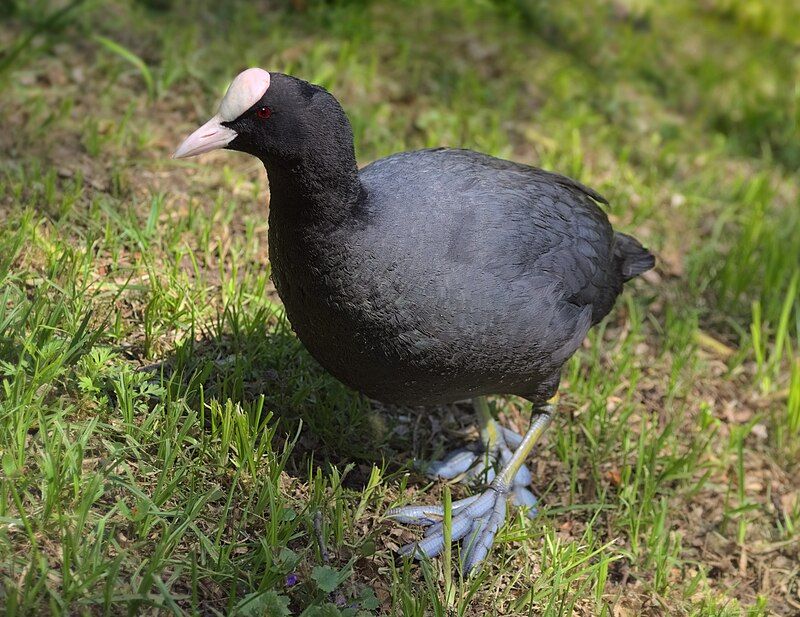
The Eurasian coot, also known as the common coot or Australian coot, is a species of waterbird that is part of the Rallidae family. This family includes birds, such as rails, crakes, coots, and gallinules.
The Eurasian coot is found in many parts of the world, including Europe, Asia, Australia, New Zealand, and parts of Africa.
Its unique appearance, including a slaty-black body, a glossy black head, and a white bill with a white frontal shield, is easily recognizable. The Eurasian coot is a medium-sized waterbird often seen swimming in lakes, ponds, rivers, and wetlands.
It is an omnivorous species, meaning it eats both plants and animals. Its diet includes plants, insects, small fish, frogs, and worms. It is also an adept diver and can stay submerged for up to 30 seconds while searching for food.
The Eurasian coot is a social bird and lives in colonies of up to a few hundred individuals. It builds its nests near the water’s edge and usually lays between four and eight eggs.
The parents take turns incubating the eggs, and the chicks can fly within three to four weeks after hatching. Overall, the Eurasian coot is an exciting sp waterbird species with a unique appearance.
It is an essential of freshwater ecosystems and is widely distributed across many parts of the world.
| Kingdom | Animalia |
| Phylum | Chordata |
| Class | Aves |
| Order | Gruiformes |
| Family | Rallidae |
| Genus | Fulica |
| Species | F. atra |
20. Whimbrel
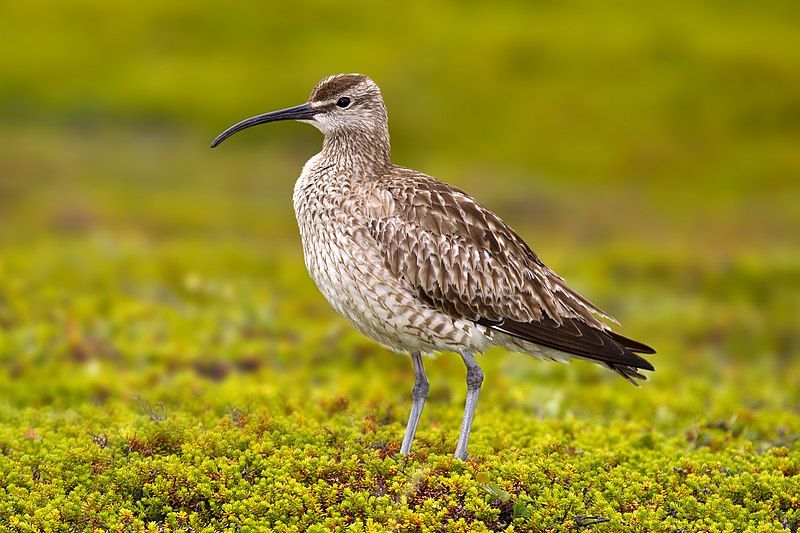
The Eurasian or common whimbrel is a type of wader belonging to the Scolopacidae family. It is found in various regions worldwide, with a large population inhabiting sub-arctic Asia and Europe. In North America, this species is known as the white-rumped whimbrel.
This species is found as far south as Scotland, making it one of the most geographically widespread curlews. The Eurasian or common whimbrel is a medium-sized bird, typically growing to around 25-28 inches long and weighing up to 15 ounces.
It has a long, slightly curved bill and a distinctive white rump. Its plumage is predominantly grey-brown, with lighter patching on its back and wings. The Eurasian or common whimbrel has many habitats, including coastal areas, estuaries, and inland wetlands.
Its diet consists mainly of small invertebrates such as worms, mollusks, crustaceans, insects, and all fish. During the breeding season, the Eurasian or common whimbrel is known to form large colonies and lay up to four eggs.
The chicks hatch after an incubation period of approximately 21 days.
| Kingdom | Animalia |
| Phylum | Chordata |
| Class | Aves |
| Order | Charadriiformes |
| Family | Scolopacidae |
| Genus | Numenius |
| Species | N. phaeopus |
21. Rock Pigeon
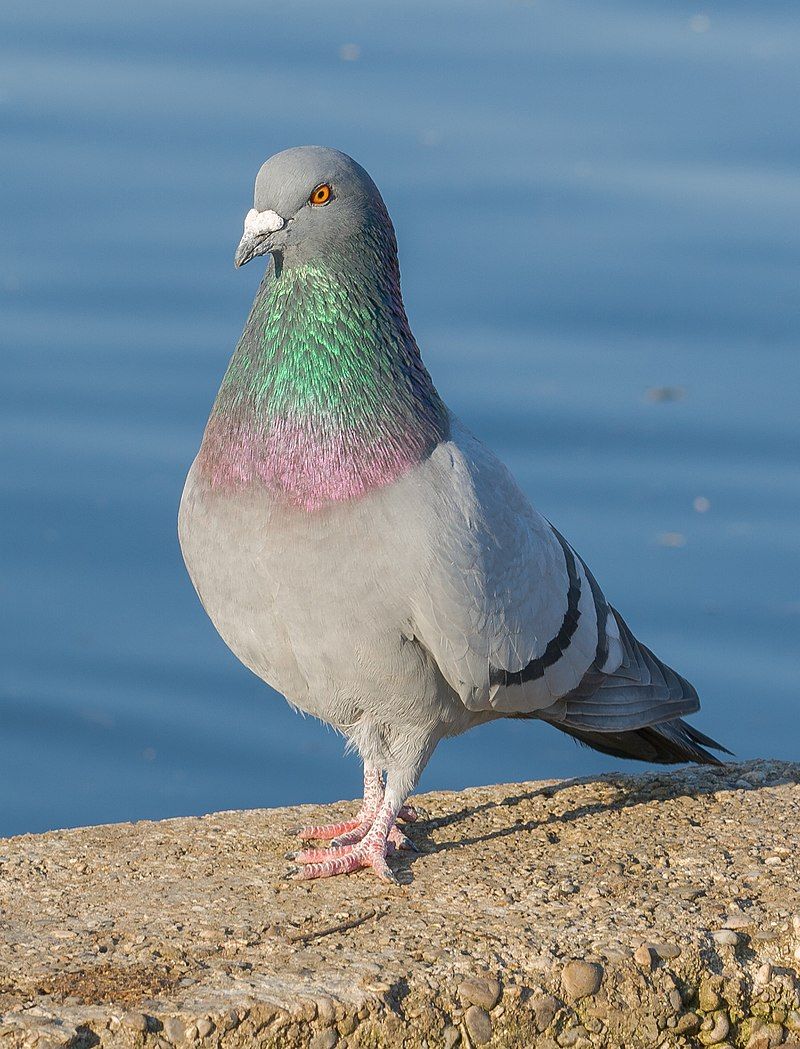
The rock dove, rock pigeon, or common pigeon is a bird species belonging to the Columbidae family and is also commonly referred to simply as the “pigeon.” This species. It is” the ancestor of the domestic pigeon, ” believed to have been domesticated over 5,000 years ago.
As a result of domestication, the populations of feral pigeons have grown worldwide due to the escape of domestic pigeons.
Feral pigeons are now found on every continent except Antarctica. They are considered an invasive species in some areas due to their large numbers and the damage they can cause to crops and other habitats.
| Kingdom | Animalia |
| Phylum | Chordata |
| Class | Aves |
| Order | Columbiformes |
| Family | Columbidae |
| Genus | Columba |
| Species | C. livia |
22. Lesser White-Fronted Goose
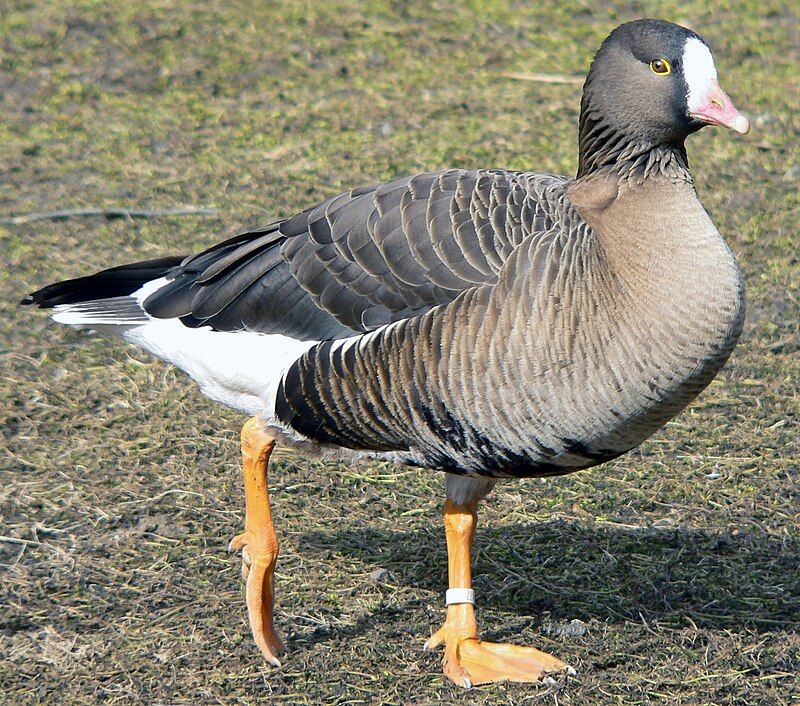
The lesser white-fronted goose is a species of goose that is closely related to the larger white-fronted goose. It is found in the Palearctic’s northernmost regions, encompassing Europe, Asia, and North Africa.
Although it is a fairly common species in the Palearctic, it is not as prevalent in Europe.
To increase the population of the lesser white-fronted goose in Europe, there have been reintroduction attempts in Fennoscandia, an area covering parts of Norway, Sweden, and Finland.
These reintroduction programs are designed to boost the species’ population in the region and help protect their habitats from destruction. The hope is that with the help of these programs, the lesser white-fronted goose population in Europe will continue to grow.
| Kingdom | Animalia |
| Phylum | Chordata |
| Class | Aves |
| Order | Anseriformes |
| Family | Anatidae |
| Genus | Anser |
| Species | A. erythropus |
23. Ruddy Shelduck
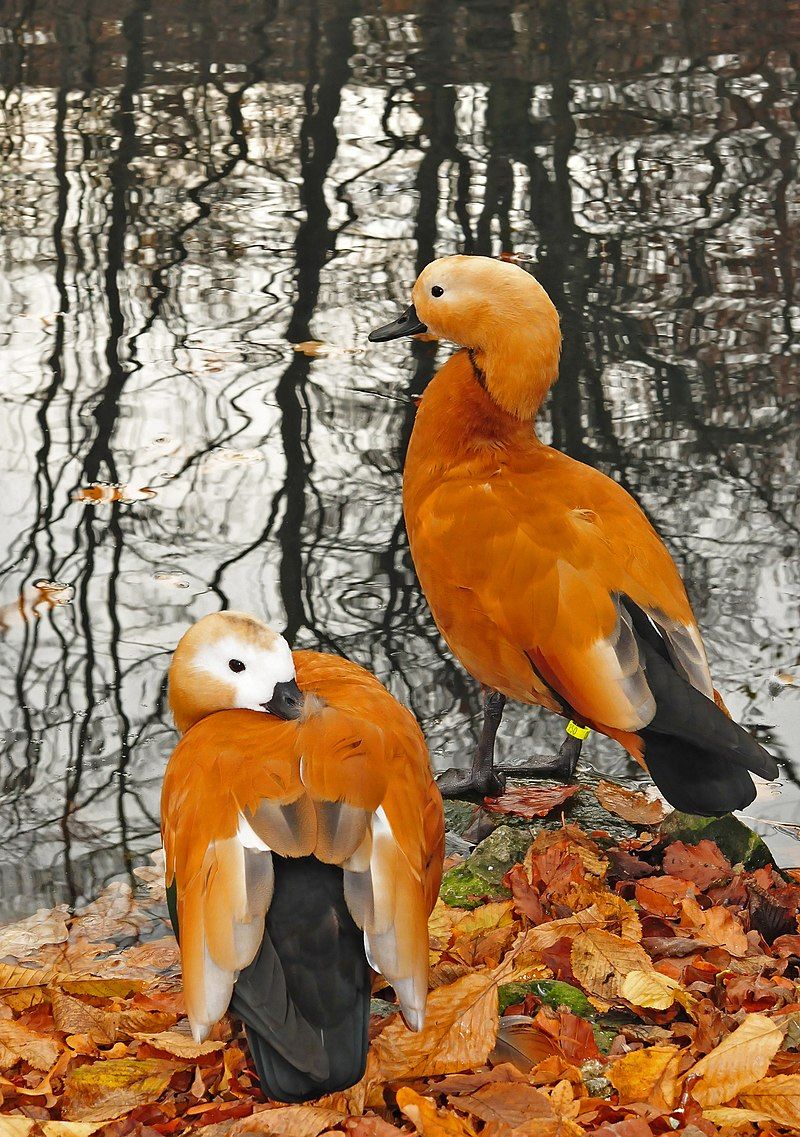
The ruddy shelduck, also known as the Brahminy duck, is a species of waterfowl belonging to the family Anatidae. It is a medium-sized bird, measuring 58 to 70 cm long and weighing 135 cm.
Wingspans most distinguishing feature is its reddish-brown plumage, which is unusual among this family of birds. This duck species can be found in India and other parts of Asia, as well as the Middle East and Europe.
The species is known for its gregarious nature and loud, trumpeting call. It is a very popular bird with birdwatchers, as it is quite easy to observe. The ruddy shelduck is also a popular game bird in many parts of its range and is hunted for its meat.
Its population is stable, but its numbers have declined over the past few decades due to habitat loss, hunting, and other human activities.
| Kingdom | Animalia |
| Phylum | Chordata |
| Class | Aves |
| Order | Anseriformes |
| Family | Anatidae |
| Genus | Tadorna |
| Species | T. ferruginea |
24. Scaly-Sided Merganser
The scaly-sided merganser, also known as the Chinese merganser, is an endangered species of typical merganser. These birds are found in Manchuria and extreme Southeast Siberia, in the northern regions they breed and during the winter they migrate south.
The scaly-sided merganser is particularly endangered due to the rapid destruction of its natural habitat and the fact that its population numbers are rapidly decreasing.
The scaly-sided merganser is a medium-sized waterfowl characterized by its distinctive salmon-red flanks, covered in scales, and black-and-white head and neck.
It has a long, pointed bill used to search for food in the water.
Its diet consists of fish, crustaceans, and mollusks, which it feeds on while swimming. The scaly-sided merganser’s natural habitat is in Manchuria’s mountain streams and rivers and extreme Southeast Siberia.
In the warmer months, they breed in the north and then migrate south in the winter, when the temperatures become too cold fo survive.
Unfortunately, destroying these natural habitats has put the species at risk as they no longer have anywhere to go. The scaly-sided merganser is also threatened by illegal hunting and poaching, as it is a popular game bird.
This is putting further strain on the species’ already dwindling population and is one reason it is endangered. To help protect the scaly-sided merganser, there are several conservation efforts being undertaken.
Organizations such as the World Wildlife Fund have set up protected areas for the species and are working to create an environment where they can thrive.
Additionally, governments are creating laws and regulations to protect the species from illegal hunting and poaching. Ultimately, it is up to us to protect the scaly-sided merganser from further endangerment.
With our help, this species can be saved from extinction and continue living in its natural habitat for generations.
| Kingdom | Animalia |
| Phylum | Chordata |
| Class | Aves |
| Order | Anseriformes |
| Family | Anatidae |
| Genus | Mergus |
| Species | M. squamatus |
Conclusion
Shizuoka is a great place for bird-watching. With its diverse habitats and a wide variety of species, it is home to many different species of birds.
From the majestic eagles to the colorful parakeets, the birds of Shizuoka are an amazing sight to behold and a great source of enjoyment for bird watchers. With its abundant natural beauty, Shizuoka is a great destination for bird watching and appreciating nature.